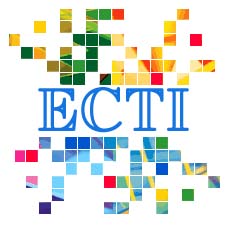A Novel Single Phase AC-AC Converter with Power Factor Control
Main Article Content
Abstract
This paper presents a novel single-phase ac-ac converter topology that is capable of creating voltage output to buck or boost mode. The structure of topology uses minimal switches controlled with the two-section overlap in each cycle of the ac input. The proposed topology is simple, low-cost, and contains minimum number of device. The control strategy can regulate a wide output voltage range with low harmonic distortion and improve the power factor. The closed-loop control is divided into two parts. The first part is the voltage control of dual dc link capacitors, and the second part controls the ac output voltage. In the part of voltage control at the dc-link capaci- tors, the switches operate in the boost mode. The ac input current is controlled by PID control with the aim for power factor correction. The output voltage is regulated by the PID control where the sinusoidal pulse-width modulation (sPWM) technique is chosen. Simulation and experimental results confirmed the output voltage regulation, the control of the charging dual dc-link voltage capacitors, the responses to the input voltage and load changes.
Article Details
This journal provides immediate open access to its content on the principle that making research freely available to the public supports a greater global exchange of knowledge.
- Creative Commons Copyright License
The journal allows readers to download and share all published articles as long as they properly cite such articles; however, they cannot change them or use them commercially. This is classified as CC BY-NC-ND for the creative commons license.
- Retention of Copyright and Publishing Rights
The journal allows the authors of the published articles to hold copyrights and publishing rights without restrictions.
References
[2] J.-H. Choi, J.-M. B. kwon, j.-H. jung, and B. H. Kwon, “High-Performance Online UPS Using Three-Leg-Type Converter," IEEE Trans. Ind. Electron., vol. 52, no.3, pp. 889-897, Jun. 2005.
[3] C. B. Jacobina, T. M. Oliveira and E. R. C. da Silva, “Control of the Single-Phase Three-Leg AC/AC Converter," IEEE Trans. Ind. Electron., vol.53, no. 2, pp.467-476, Apr 2006.
[4] I. S. de Freitas, C. B. Jacobina, E. C. dos Santos,“Single-Phase to Single-Phase Full-Bridge Converter Operating With Reduced AC Power in the DC-Link Capacitor," IEEE Trans. Power Electron., vol.25, no.2, pp. 272-279. Feb.2010.
[5] K. Georgakas and A. Safacas, “Modified sinusoidal pulse-width modulation operation technique of an AC-AC single-phase converter to optimise the power factor," IET Power Electronics., vol.3, lss.3, pp. 454-464.
[6] L. Garcia de Vicu?a, M. Castilla, J. Miret, J. Matas and J. M. Guerrero, “Sliding-Mode Control for a Single-Phase AC/AC Quantum Resonant Converter," IEEE Trans. Ind. Electron., vol. 56, no. 9, pp. 3496-3504, Sep. 2009.
[7] M.-K. Nguyen, Y.-G. Jung and Y.-C. Lim “Single-Phase AC-AC Converter Based on Quasi-Z-Source Topology," IEEE Trans. Power Electron., vol. 25, no. 8, pp. 2200-2209, Aug. 2010.
[8] X. P. Fang, Z. M. Qian, and F. Z. Peng, “Single-Phase Z-Source PWM AC-AC Converters," IEEE Power Electron. Letters, vol. 3, no. 4, pp 121-124.


